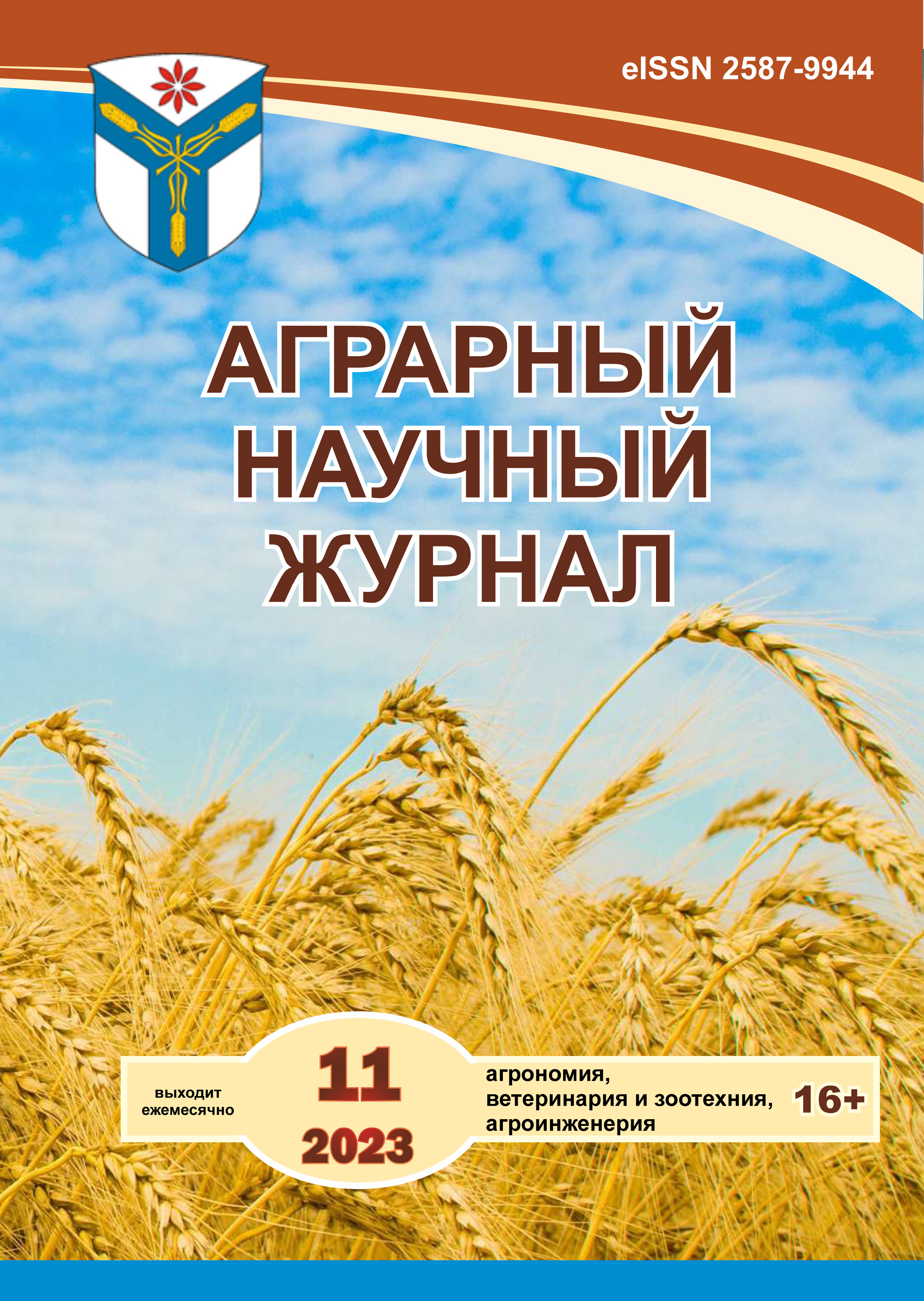Yield and feed value of aboveground soybean biomass of northern ecotype varieties in the conditions of the Central Non-Chernozem region
DOI:
https://doi.org/10.28983/asj.y2023i11pp62-67Keywords:
soybean varieties, productivity, yield, quality of plants and seedsAbstract
The results of field experiments (2019–2021) on the assessment of soybean varieties of the northern ecotype Okskaya, Svetnaya, Mageva on the productivity of aboveground biomass are presented, the prospects of using aboveground biomass for fodder purposes in the conditions of the Central Non-Chernozem region on medium-saline, sod-podzolic medium-loamy slightly humus soils, medium-supplied with phosphorus and potassium with a soil solution reaction close to neutral are substantiated. It was found out that, on average, according to experience, the maximum accumulation of aboveground biomass (raw and dry), protein and feed units is observed in the phase of full filling of seeds. The yield of aboveground biomass at the same time reaches 24.7 t/ha (raw) and 8.39 t/ ha (dry), the protein harvest is 1379 kg / ha, which is equivalent to 4.19 thousand f.u./ ha, while the collection of fodder units with a harvest of dry biomass exceeds the collection of fodder units with a harvest of seeds (3.21 thousand f.u./ha with a seed yield of 2.36 t/ha) by 0.98 thousand f.u., or 1.3 times. On average, over the years of research, the maximum productivity and feed value was demonstrated by the Okskaya variety: the yield of crude aboveground biomass was 26.9 t/ha, of dry – 8.86 t/ha, the collection of raw protein with a yield of 1492 kg / ha, the yield of feed units was 3.10 thousand. The Mageva and Svetly varieties are inferior to the Okskaya variety: for the yield of crude aboveground biomass by 1.10–1.18 times (or by 2.20–4.20 t/ha), dry aboveground biomass by 1.05–1.12 times (or by 0.45–0.96 t/ha), for the collection of fodder units by 1.05–1.13 times (or by 0.23–0.24 thousand f.u./ha).
Downloads
References
Вишнякова М. А., Сеферова И. В., Самсонова М. Г. Требования к исходному материалу для селекции сои в контексте современных биотехнологий // Сельскохозяйственная биология. 2017. Т. 52. № 5. С. 905–916.
Гатаулина Г. Г., Заренкова Н. В., Никитина С. С. Сорта сои северного экотипа: как погода влияет на рост, развитие, формирование урожая и его вариабельность // Кормопроизводство. 2019. № 7. С. 34–40.
Головина Е. В., Зотиков В. И., Зайцев В. Н., Кирсанова Е. В. Накопление сырого протеина и сырого жира растениями сортов сои северного экотипа // Зернобобовые и крупяные культуры. 2016. № 3(19). С. 62–70.
Гончаров В. Д., Рау В. В. Решение проблемы кормового белка в животноводстве // Экономика, труд, управление в сельском хозяйстве. 2019. № 1(46). С. 64–69.
Дорохов А. С., Белышкина М. Е. Агроклиматическая характеристика регионов Нечерноземной зоны Российской Федерации и оценка пригодности для возделывания современных раннеспелых сортов сои // Вестник Ульяновской государственной сельскохозяйственной академии. 2021. № 3(55). С. 34–39.
Доспехов Б. А. Методика полевого опыта. М.: Колос, 1989. 335 с.
Завалин А. А. Биологический и минеральный азот в земледелии России. М.: Изд-во ВНИИ агрохимии имени Д.Н. Прянишникова, 2022. 256 с.
Посыпанов Г. С. Биологический азот. Проблемы экологии и растительного белка. М.: Инфра-М, 2015. 251 с.
Синеговская В. Т., Наумченко Е. Т., Кобозева Т. П. Методы исследований в полевых опытах с соей. Благовещенск: ФГБНУ Всероссийский НИИ сои, 2016. 116 с.
The Study of Possible Soybean Introduction into New Cultivation Regions Based on the Climate Change Analysis and the Agro-Ecological Testing of the Varieties / M. Belyshkina et al. // Agronomy. 2023. Т. 13. No. 2. 610 р.
Heat stress in grain legumes during reproductive and grain-filling phases / M. Farooq et al. // Crop and Pasture Science. 2017. Vol. 68. No. 10–11. Р. 985–1005.
Jumrani K., Bhatia V. S. Interactive effect of temperature and water stress on physiological and biochemical processes in soybean // Physiology and Molecular Biology of Plants. 2019. Vol. 25. No. 3. Р. 667–681.
Downloads
Published
Issue
Section
License
Copyright (c) 2023 The Agrarian Scientific Journal

This work is licensed under a Creative Commons Attribution-NonCommercial-NoDerivatives 4.0 International License.








